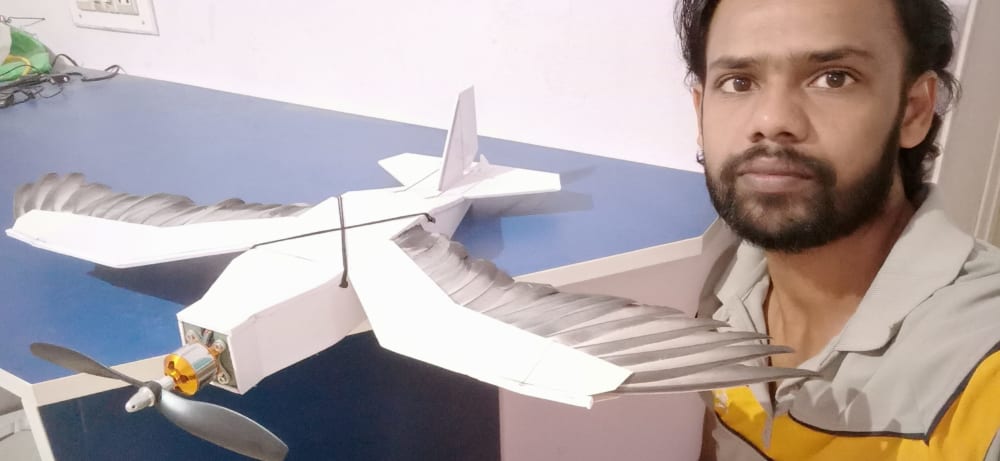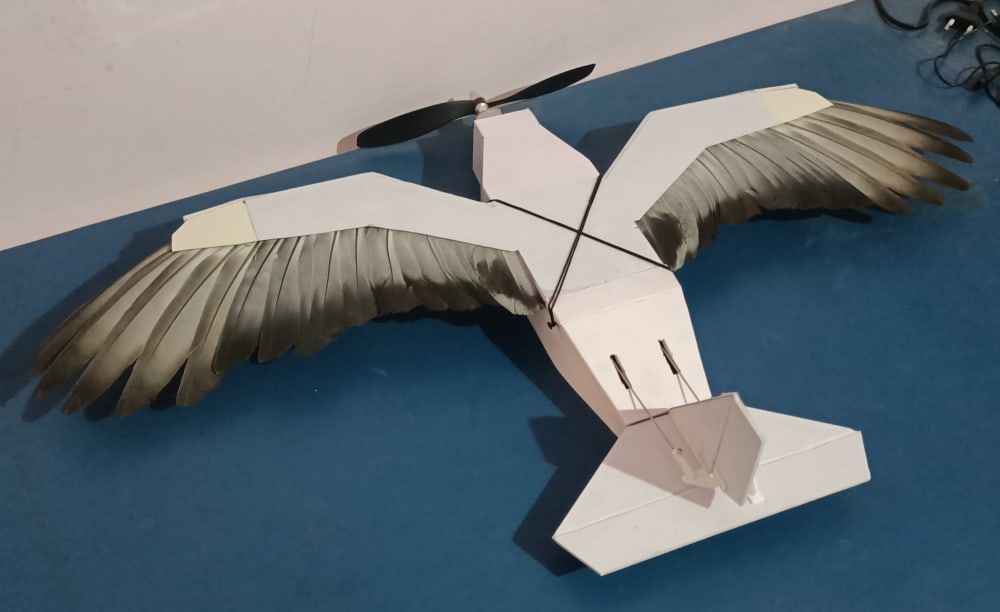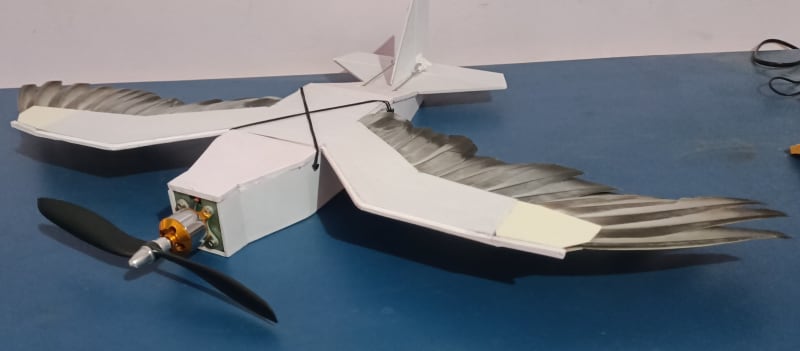Is it a bird? Is it a plane? No, it’s a drone. Introducing the Bird Bot, a new UAV designed to soar like a real-life pigeon using bird-like feathered wings.
The Bird Bot prototype is called a bio-hybrid aerial robot because it fuses both biological and artificial elements. To put working prototype together, the researcher used real feather from pigeon cadavers but also stuff you’d likely see in other robots.
Try as they might, even the most advanced robotics on earth struggle to recreate the effortless elegance and efficiency with which bird fly through the air. The “Bird Bot” from “Aarya” takes a step toward changing that by investigating and demonstrating the unique qualities of feathered flight.
It’s the kind of thing that could inform improved wing design for aircraft, which currently rely in many ways on principal established more than a century ago. Passenger jets, of course, don’t need to dive or roll on short notice, but drones and other small craft might find the ability extremely useful.
The Bird bot using 40 actual pigeon feathers (20 primary and 20 secondary) and a super light frame, change and made a simple flying machine that doesn’t derive lift from its feathers- it has a propeller on the front, but use them to steer and maneuver using the same type of flexion as the Bird themselves do when flying and gliding.
Bird Bot body is made up of a foam board that was folded and glued together. It includes a propeller drive electronic propulsion system to get it up into the air, as well as a big collection of sensors, like GPS, barometer, gyroscope, magnetometer, radios, three-axis accelerometer and on autopilot system, the tail also pack in an elevator for longitudinal control and a rudder for lateral control.
Bird bot is the most advanced bird-like robot that’s even been built, but it’s creation could have far reaching impact in the design of future aircraft.
Like this entry?
-
About the Entrant
- Name:Eranna B
- Type of entry:individual
- Patent status:none








